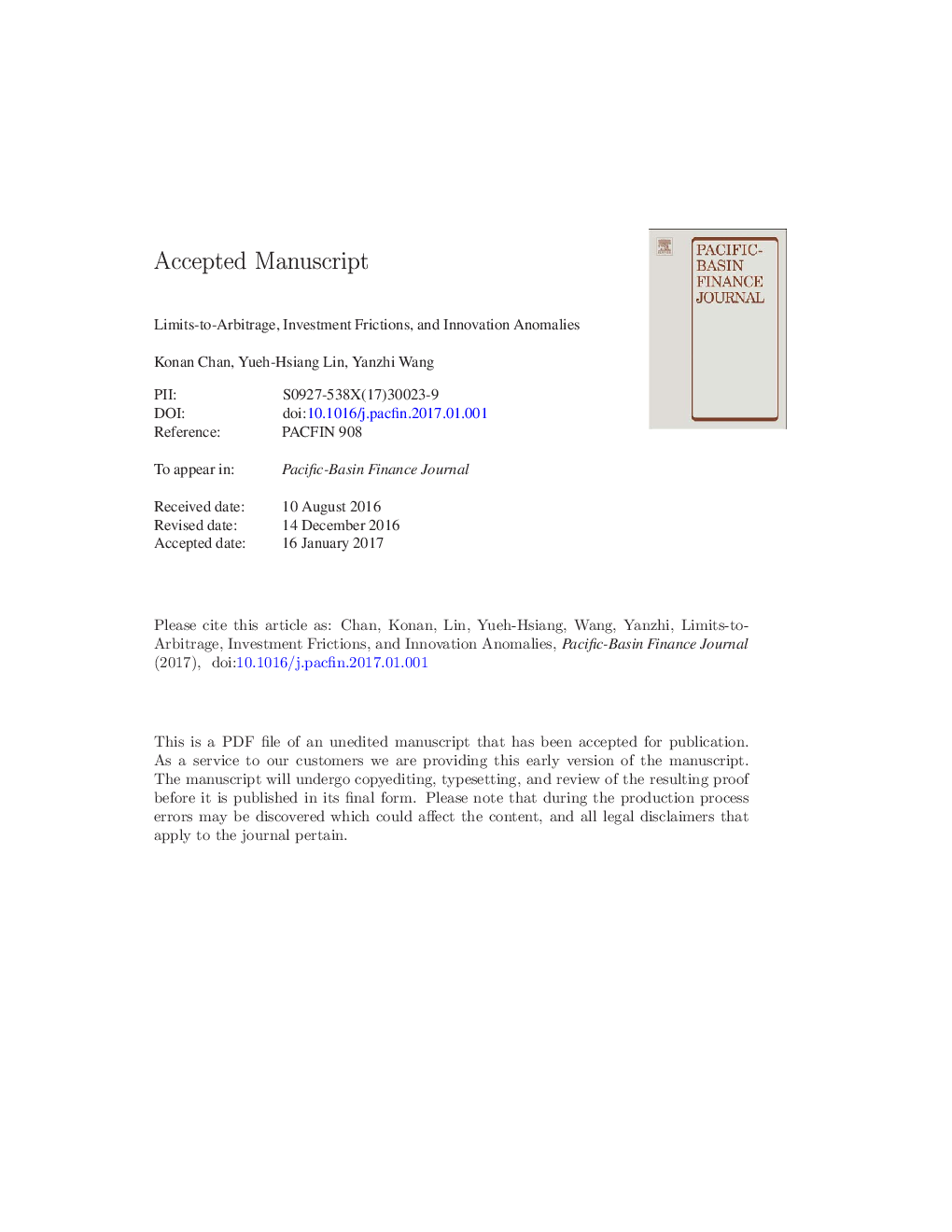| Article ID | Journal | Published Year | Pages | File Type |
|---|---|---|---|---|
| 5102311 | Pacific-Basin Finance Journal | 2017 | 48 Pages |
Abstract
This paper examines whether the limits-to-arbitrage and investment frictions hypotheses explain the research and development (R&D) premium. We find that the R&D premium is stronger for stocks that are hard to arbitrage and for stocks with investment frictions. The limits-to-arbitrage explanation explains more of the R&D premium than does the investment frictions explanation. Our results hold under the two-way sorts on limits-to-arbitrage and investment frictions measures. We also examine the impact of limits-to-arbitrage and investment frictions on innovation efficiency and R&D ability. We find that the limits-to-arbitrage and investment frictions are equally effective in explaining the two new innovation anomalies.
Related Topics
Social Sciences and Humanities
Economics, Econometrics and Finance
Economics and Econometrics
Authors
Konan Chan, Yueh-Hsiang Lin, Yanzhi Wang,
